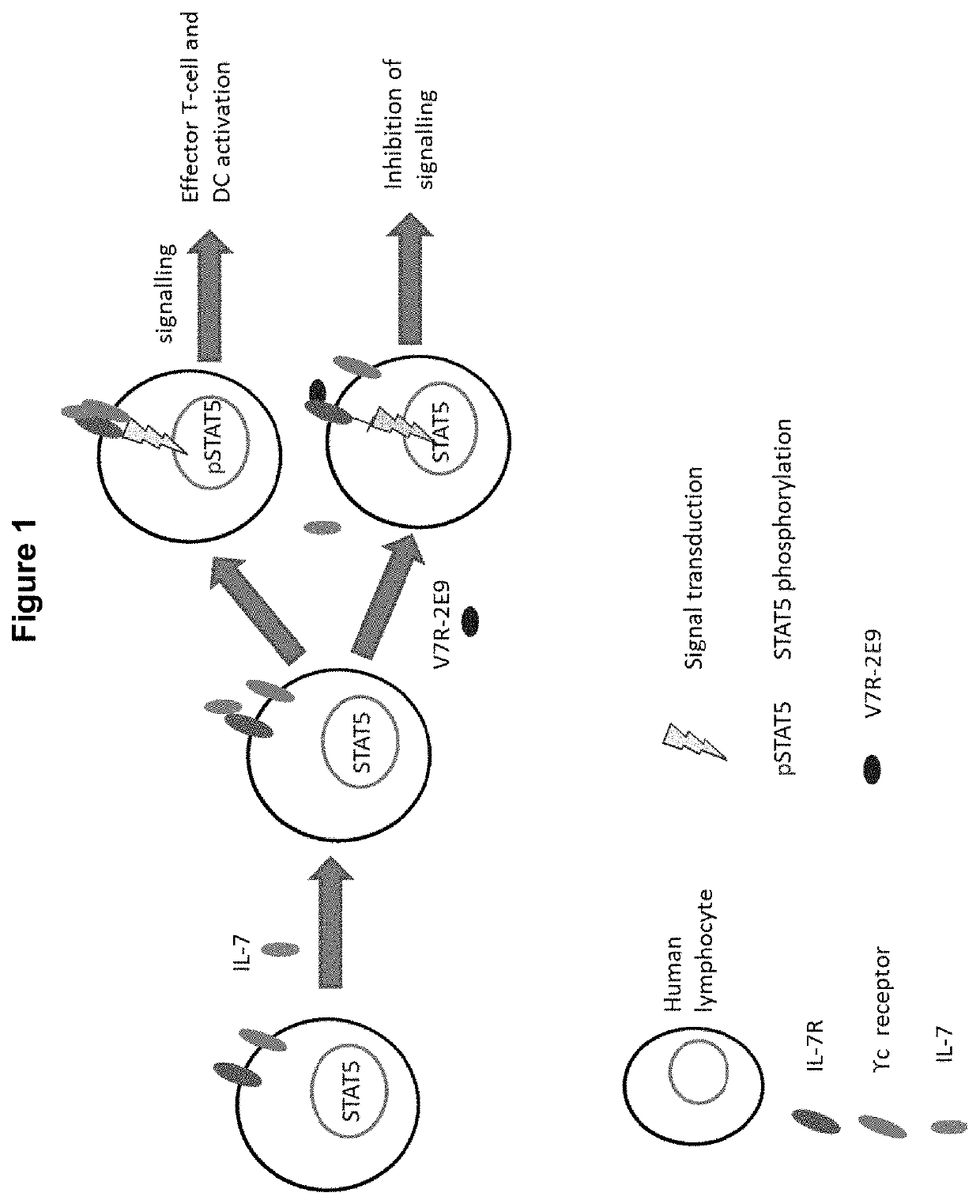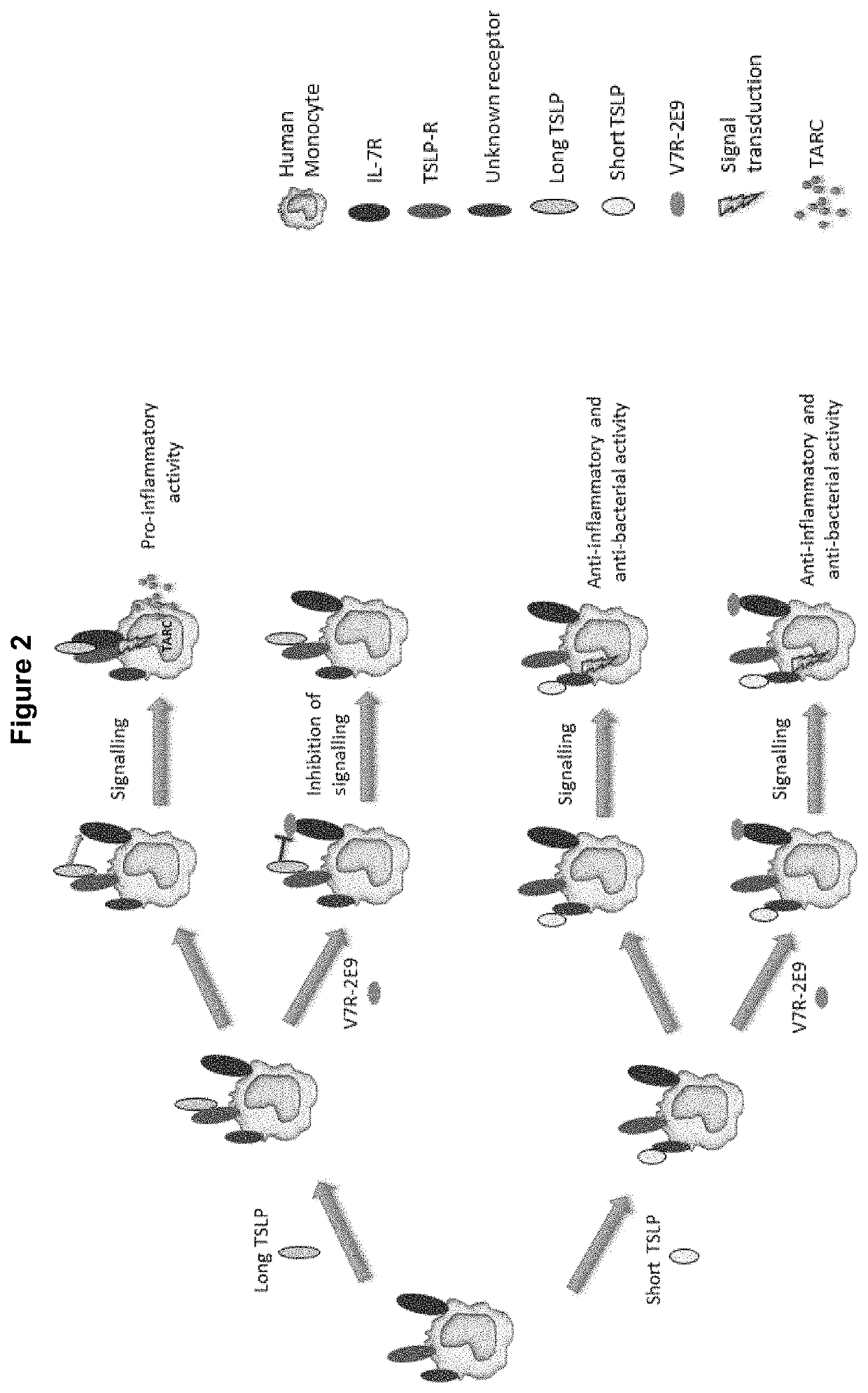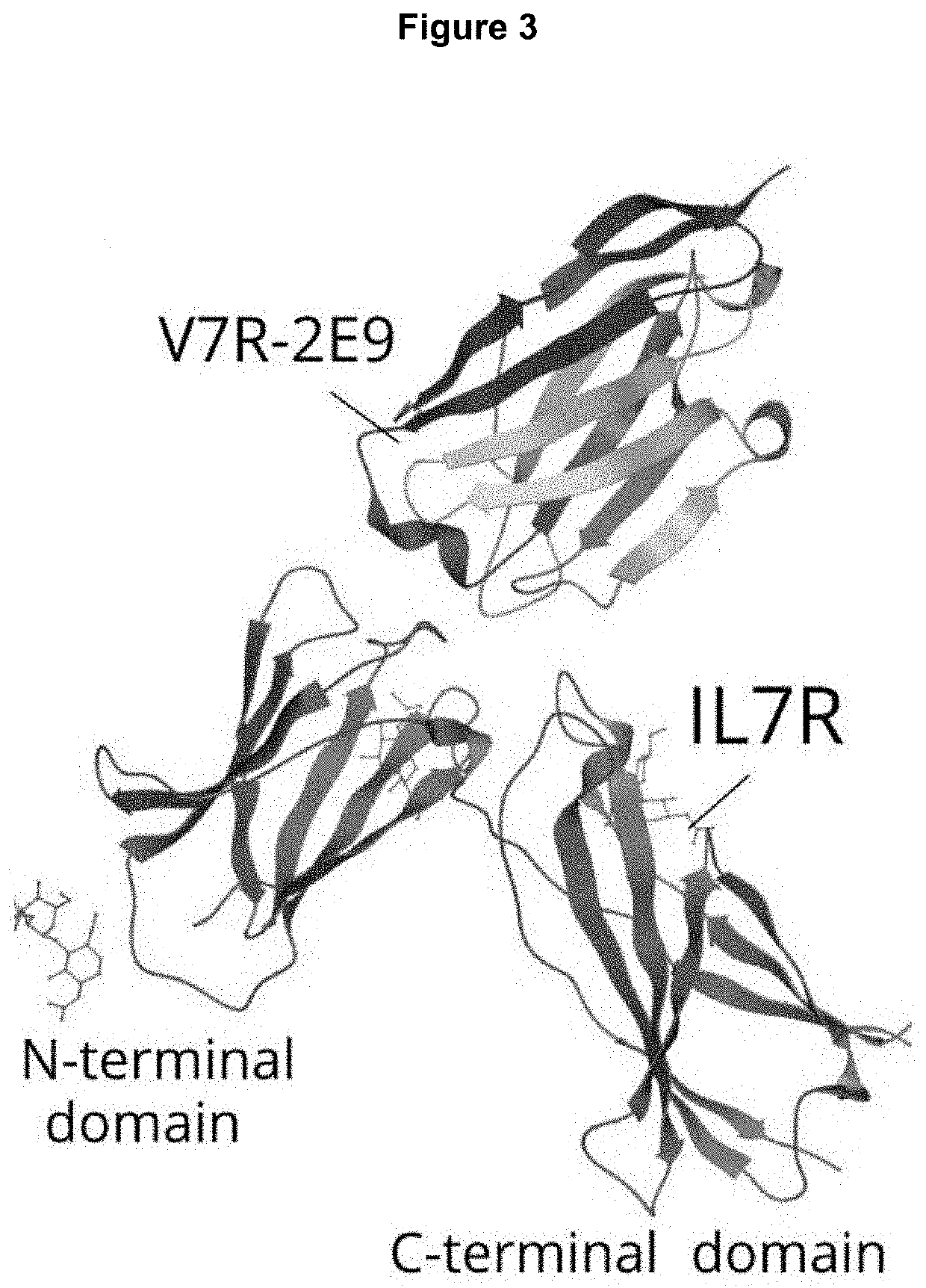Polypeptides
a polypeptide and peptide technology, applied in the field of polypeptides, can solve the problems of fatigue, pain in the abdomen, diarrhea, vomiting and/or weight loss, and lack of concentration, and achieve the effects of improving the gastrointestinal tra
- Summary
- Abstract
- Description
- Claims
- Application Information
AI Technical Summary
Benefits of technology
Problems solved by technology
Method used
Image
Examples
example 1
ion and Phage Library Construction
[0420]Two llamas were each immunised with soluble human recombinant IL-7Rα. Blood was collected from both llamas at different time points during the immunization, and tested for IL-7Rα binding and neutralisation to monitor the development of the immune response against the IL-7Rα. The analysis showed that only one llama developed good anti-IL-7Rα antibody titres while the other llama was unable to respond to IL-7Rα immunization. RNA isolated from white blood cells collected from the responsive llama at the end of the immunisation was used to generate twelve separate phage display libraries.
example 2
elections for Phages with Human IL-7Rα-Binding Activity
[0421]Library selection strategies were developed to isolate ICVDs that bind to epitopes present on the extracellular domain of the IL-7Rα subunit, including ICVDs that interfere with the binding of IL-7 to IL-7R. Several methods were used for the selective enrichment of phages displaying ICVDs with IL-7Rα binding characteristics and other desirable properties including high binding affinity and resistance to intestinal proteases. Phages present in eluates from the different library selections were used to infect E. coli and individual colonies were picked into master-plates and propagated to generate clonal cultures. Periplasmic supernatants containing selected monoclonal ICVDs were used for primary evaluation studies to identify those with the required characteristics.
[0422]From a total of 630 library-selected clones picked into the original 8 master-plates screened, a final set of 7 primary clones was selected for production ...
example 3
nd Protease Resistance of Primary Clones
[0425]Potency
[0426]The potency of the 7 primary clones was assessed using an IL-7 / IL-7R neutralising ELISA.
[0427]The primary clones were sub-cloned from phagemids into pMEK222 plasmid for the addition of C-terminal FLAG-6×His tags and expression in E. coli. These ICVDs were expressed from E. coli TG1 and purified via the 6×His tag.
[0428]A 7-point dilution series of the clones was prepared in 1% BSA (at 2× the assay concentration) starting at 300 nM and using a 3.2 dilution factor. The mAb829 comparator antibody was used as a positive control in the ELISA with a concentration range between 10 nM and 0.088 nM (2× the assay concentration). Volumes sufficient for triplicates were prepared for each clone dilution, while a volume sufficient for 2 triplicates (2 plates) was prepared for mAb829. 85 μL (or 170 μL) of each ICVD (or mAb829) dilution were mixed with 85 μL (or 170 μL) of 10 ng / mL IL-7(2× the assay concentration). 85 μL of IL-7 were mixed w...
PUM
 Login to View More
Login to View More Abstract
Description
Claims
Application Information
 Login to View More
Login to View More - R&D
- Intellectual Property
- Life Sciences
- Materials
- Tech Scout
- Unparalleled Data Quality
- Higher Quality Content
- 60% Fewer Hallucinations
Browse by: Latest US Patents, China's latest patents, Technical Efficacy Thesaurus, Application Domain, Technology Topic, Popular Technical Reports.
© 2025 PatSnap. All rights reserved.Legal|Privacy policy|Modern Slavery Act Transparency Statement|Sitemap|About US| Contact US: help@patsnap.com



